Barbell Sumo Squat: Why Should You Try It
Author:
Unlock your full potential by engaging with our experts and community! Have questions about your fitness journey or looking for expert advice on weightlifting techniques? Don’t hesitate — leave a comment below and Ihor Shymechko will provide a personalized answer and insights to help you reach your goals.
Torokhtiy is reader-supported. Some links are affiliate links, and we may earn a commission at no extra cost to you. See our disclosure page for details.
Are you bored with traditional exercises? Do you feel that your inner things don’t get enough stress? I have a perfect solution for your – the barbell sumo squat. It is a multi-purpose drill that can bring lots of benefits to your training as well as add some variety when usual exercises don’t whet your appetite anymore.
Find out why you should try the sumo squat with bar in this article and learn how to do it properly to get the best result. Let’s get down to business!
The barbell sumo squat is a variation of the traditional squat that targets your quads, glutes, and hamstrings the same way but also provides more load for the inner thighs and core muscles. Another key peculiarity of the sumo barbell squat is a wide stance.
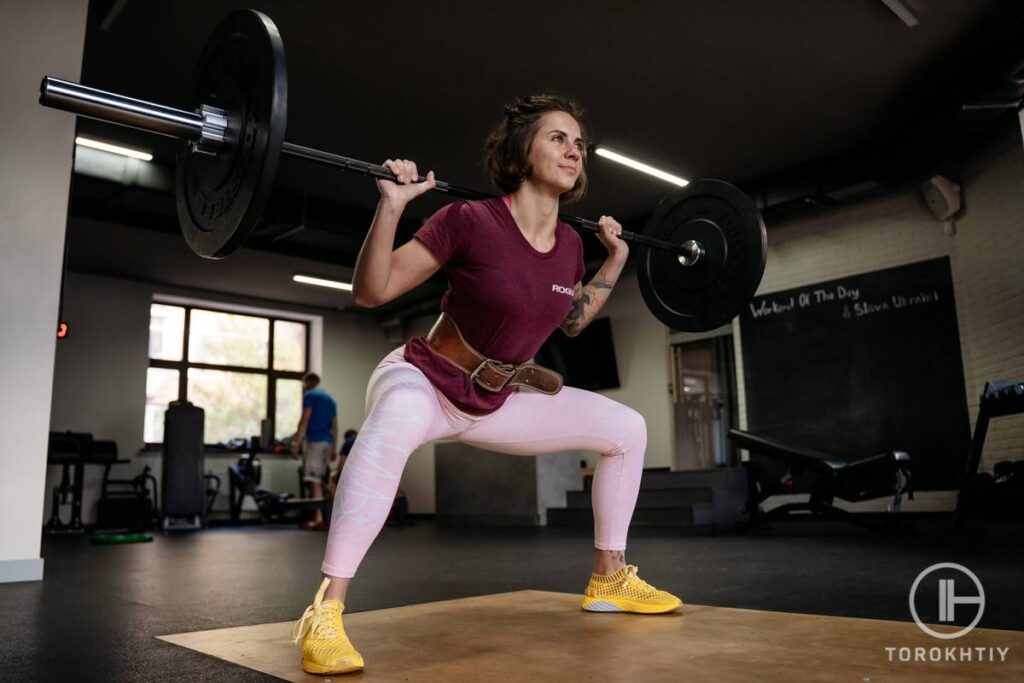
What Is a Sumo Squat With Barbell?
The sumo squat with barbell is one of the squat variations. The main difference is the foot stance that is significantly wider than you use for the traditional option. As a result, you put more stress on your inner thighs that are not so engaged in the regular squat but still train your quads, hamstrings, glutes, and calves well. Also, your core works better as you need to keep your torso in a more upright position.
Sumo squats are a common exercise in fitness, bodybuilding, powerlifting, and other strength sports, especially among females. On top of that, they are often used in rehabilitation to strengthen the adductors, avoid knee stress, and restore or develop balance, muscle control, and coordination.
Follow us!

Free!
Get a 2-week Weightlifting Program as a bonus for the subscription to kickstart your training plan!

Free!
Benefits of Sumo Squatting with Barbell
Apart from bringing some variety to your training, the sumo squat also has some more practical benefits. If you still doubt whether you should try this wonderful drill, find some of the main reasons below.
✅ Inner Thighs Training
The regular squat is meant to train the biggest muscles of your lower body such as the quads, hamstrings, glutes, and calves, but it leaves the inner thighs with little attention.
These muscles are often hard to activate, especially if you don’t have special training machines, but you can do that by just putting this variation on your workout plan. If you want to make your inner thighs stronger or improve their form, sumo squats are great for you.
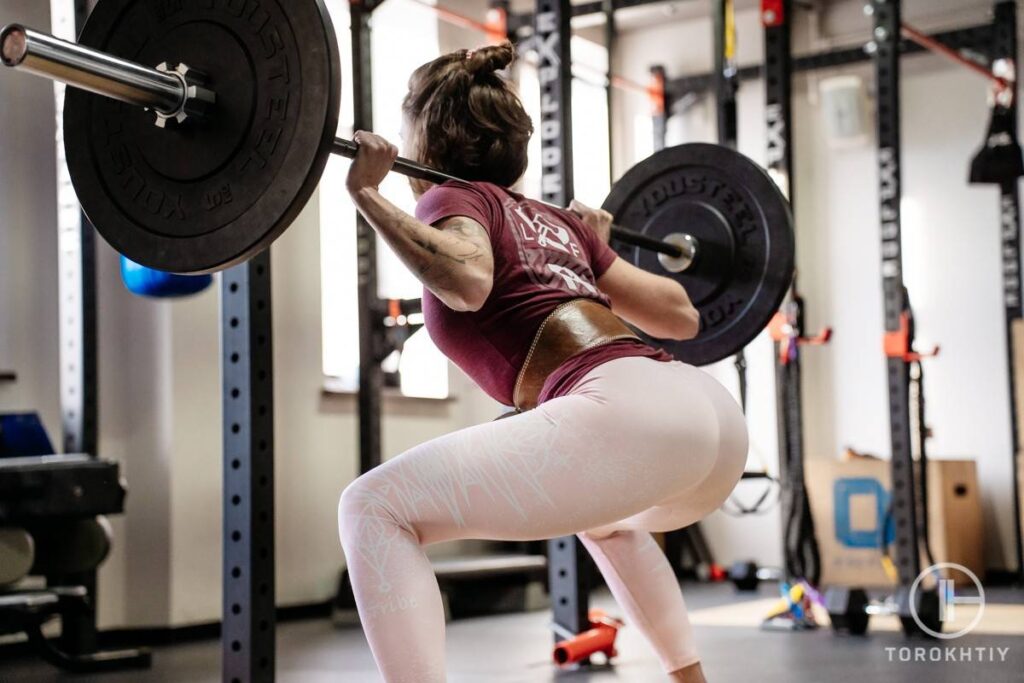
✅ Core Training
The proper sumo squat with bar requires you to keep the torso in a more upright position so your core muscles, in particular the abs and lower back, are forced to cope with more load. This benefit makes this variation even more functional than the regular one.
✅ Little Equipment
As sumo squats engage even more muscles than the traditional variation, you don’t need to lift huge weights to train your body effectively. If you work out at home and don’t have a barbell, you can use resistance bands, dumbbells, or squat with no weights at all. If you get more creative, you can even use a bottle with water or any other object and still train your muscles well.
✅ Less Knee Stress
As sumo squats engage more muscles, they also take some pressure away from your knees. On top of that, you don’t have to load the barbell with several plates to train your muscles effectively. Instead, you can use light or moderate weights to avoid overstraining your joints. Thus, sumo squats are great for those who have some knee issues but want strong athletic legs anyway.
✅ Improved Leg Strength
Sumo squats are also a wonderful drill to boost your leg strength. If you are all into heavy lifting and want to enhance your results in regular squats, the sumo variation can be a great auxiliary exercise. The inner thighs, which are often left undertrained during traditional squats, can significantly increase your strength capacity in other exercises.
If you are stuck with your conventional squats, you can try adding a few sumo sessions a month to provide some new stress and push your result. Such alteration will strengthen your weak areas and help to progress further.
How to Do a Sumo Squat with Barbell?
Now, I bet you are really eager to try out the sumo squat with a barbell. Read the full guide below and go for it!
1. Starting Position
Put your hands on a bar slightly wider than your shoulders and grab it with the overhand grip. Unrack the barbell and take a step backward. The stance width depends on your mobility and flexibility but you should place your feet wider than the shoulders. Point your toes and knees out at about 45°. Tense the abs and back to maintain a stable and firm position. Look straight ahead.
2. Descent
Take a deep breath and embrace your core. Move your glutes slightly backward and bend your knees, keeping them in line with your toes. Keep the back flat and don’t lean forward. Concentrate on activating your lower body, especially the inner thighs.
You can stop when your thighs are parallel to the floor – it is just the middle ground. Yet, you can vary the depth, depending on your mobility and flexibility – the main point is to keep your torso upright and avoid the ‘but wink’.
3. Ascent
Start going up slowly, engaging all your leg muscles and breathing out. Don’t relax your core – keep it tense throughout the whole movement. At the top, make sure not no drive your hips forward.
Usually, 3-4 sets for 8-10 reps are just enough for a regular workout. If you want to boost your maximum strength, use a heavier weight and decrease the reps to 3-5, and if you squat without any resistance, you can go for higher reps to provide enough stress for your muscles.
Differences between Regular Squats and Sumo Squats with Barbell
The main visible difference between regular squats and the sumo variation is the foot stance. In the latter case, you should put your feet wider than the shoulders, pointing your toes and knees out at around 45°.
Such a position puts more load on your inner thighs while regular squats mainly target your quads, hamstrings, glutes, and calves. It is the main reason why athletes adore this drill and often use it to activate the leg parts they can’t reach with usual exercises.
Another technical peculiarity is that you should keep your torso in a more upright position than you do for traditional squats. As a result, it demands more core activation, so you can train your abs and back muscles well, apart from the lower body.
Additionally, sumo squats can decrease the load on your knees by distributing the weight between more muscles. Also, you don’t have to go heavy on this exercise to provide enough stress. The technical peculiarities allow you to train the lower body effectively with light or moderate weights. Instead of a barbell, you can also use dumbbells, kettlebells, resistance bands, or even squat with no weight at all.
Common Mistakes during Sumo Squatting with Barbell
While performing sumo squats, remember that it is not an exercise for going heavy and crushing your PRs. The main priority is the proper technique so always keep it in mind and avoid a few mistakes that I often see in the gym.
1. Leaning Forward
Sumo squat demands a more upright position of your torso. You mustn’t lean forward as much as you do in the regular option. Always keep your core tense and use a reasonable weight to maintain correct mechanics.
2. Knees Caving In
Perhaps, the most common mistake in all squat variations is caving your knees in. Never do that if you don’t want to wake up with joint issues one day. Choose the correct loads and decrease the weight once you feel that you can’t keep your knees in line with the toes.
3. Toes Forward
While doing regular squats, your toes may face almost straight ahead, but for sumo squats, you have to point them out at about 45°. In this way, you can engage your inner thighs effectively throughout the whole movement while your knees follow your toes and stay in a safe position.
4. But Wink
A so-called ‘but wink’ is another common problem among athletes. It happens when your mobility and flexibility don’t allow you to go as low as you want so your hips round at the bottom. It puts your spine at risk right away so always keep your eye on that.
Stopping when your thighs are parallel to the floor is just the middle ground but you can even start with less depth in case there are some difficulties at first.
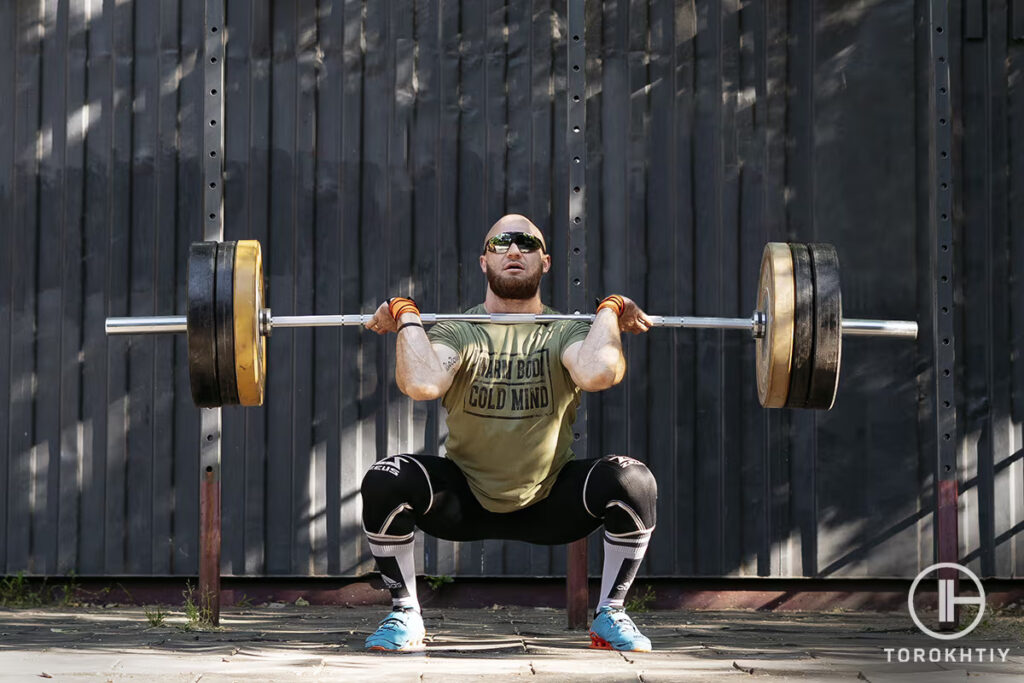
Barbell Sumo Squat Variation – Smith Machine Sumo Squat
Sumo squats have their own variations, and one of the most popular is the Smith-machine sumo squat. It is performed almost the same way as the usual sumo option but the bar is fixed in one position throughout the whole movement so it’s easier to control the upright torso position. In this case, you also have to place your feet a little bit farther ahead.
Athletes use the Smith machine to target particular muscles more precisely. In particular, it allows you to concentrate on the glutes and hamstrings and increase the inner thigh load even more.
We Recommend: WARM BODY COLD MIND Leather Weight Lifting Belt
If you are serious about your squats and regularly work with heavy weights, I recommend using a weightlifting belt for the most extreme sets. My favorite one is the WARM BODY COLD MIND leather belt which is a very versatile option. It works for both amateurs and advanced athletes.
The first point that I like is a varying width that fits your waist really well – it doesn’t dig into your skin or restrain your moves. Also, the belt is not too thick so it is versatile enough for various exercises whether you are into bodybuilding, fitness, Olympic weightlifting, or powerlifting. For sumo squats, it works really well, too.
FAQ
Are sumo squats with a barbell better than regular squats with a barbell?
There is no better squat variation – it depends on your goals. If you want to engage your inner thighs more, put more stress on the core, or take some load away from your knees, sumo squats are more effective.
Do sumo squats with a barbell make your bum and thighs bigger?
If you want to grow your bum and thighs bigger, you should use enough resistance. Without sufficient weights, sumo squats will just tone up your muscles, and improve balance and coordination.
Are sumo squats better for knees?
Sumo squats engage more muscles than regular squats do, so they take some load away from the knees. Also, you can perform them with light weights or no resistance at all to train your lower body without overstraining the joints and tendons
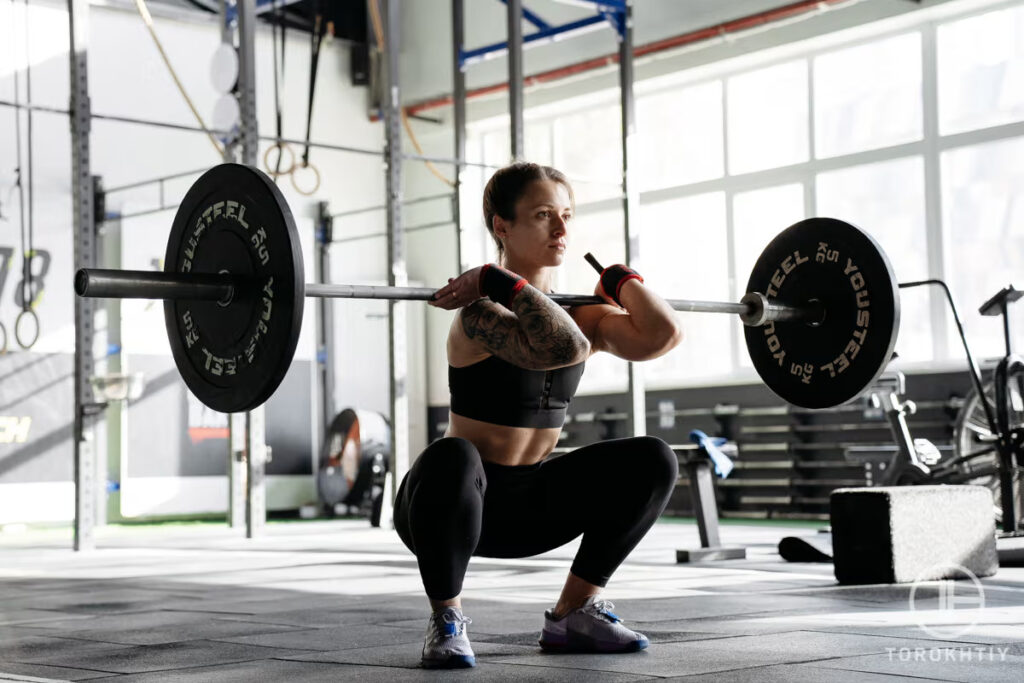
Conclusion
All in all, whether you just seek some training variety or want to boost your inner thighs, the sumo squat with a barbell is a wonderful drill for you. It helps to enhance your leg strength, decrease the knee load, and tighten up the core with the most simple equipment. It is quite easy and quick to learn, so even beginners can use it in their training but at the same time, advanced athletes can get lots of benefits, too.
Have you ever tried the sumo squat? Share your experience in the comment section!
Also Read:
- How To Wear Weight Lifting Belt
- What Size Lifting Belt Should I Get
- Weighted Dips
- Military Vs Overhead Vs Shoulder Press
- Barbell Vs Dumbbell Shoulder Press
- Clusters Functional Fitness
- Best Lifting Belt for Women
- Best Weightlifting Belt
- Ultimate Smith Machine Guide
References:
- Inner Thighs Training // MDPI: https://www.mdpi.com/1660-4601/18/2/772
- Less Knee Stress // Springer Link: https://link.springer.com/article/10.1186/s13102-018-0103-7
Why Trust Us?
With over 20 years in Olympic weightlifting, strength training, nutrition coaching, and general fitness our team does its best to provide the audience with ultimate support and meet the needs and requirements of advanced athletes and professional lifters, as well as people who strive to open new opportunities and develop their physical capabilities with us.
By trusting the recommendations of our certified experts in coaching, nutrition, and sports training programming, as well as scientific consultants, and physiotherapists, we provide you with thorough, well-considered, and scientifically proven content. All the information given in the articles concerning workout programming, separate exercises, and athletic performance, in general, is based on verified data.
The product testing process is described in more detail here.
Author: Ihor Shymechko
Pro Olympic Weightlifter, Coach
Best Results: Snatch – 208 kg,
C&J – 240 kg
Ihor has been a professional weightlifter since 1996, boasting over two decades of competition experience. His notable achievements include clinching the European Championship in 2009 and securing a silver medal in the 105kg division at the Senior World Championships in 2011. Ihor represented his country in the 2008, 2012, and 2016 Summer Olympics. After retiring from competitive weightlifting, he transitioned to coaching, leveraging his vast experience to guide athletes who now compete on both national and international stages.



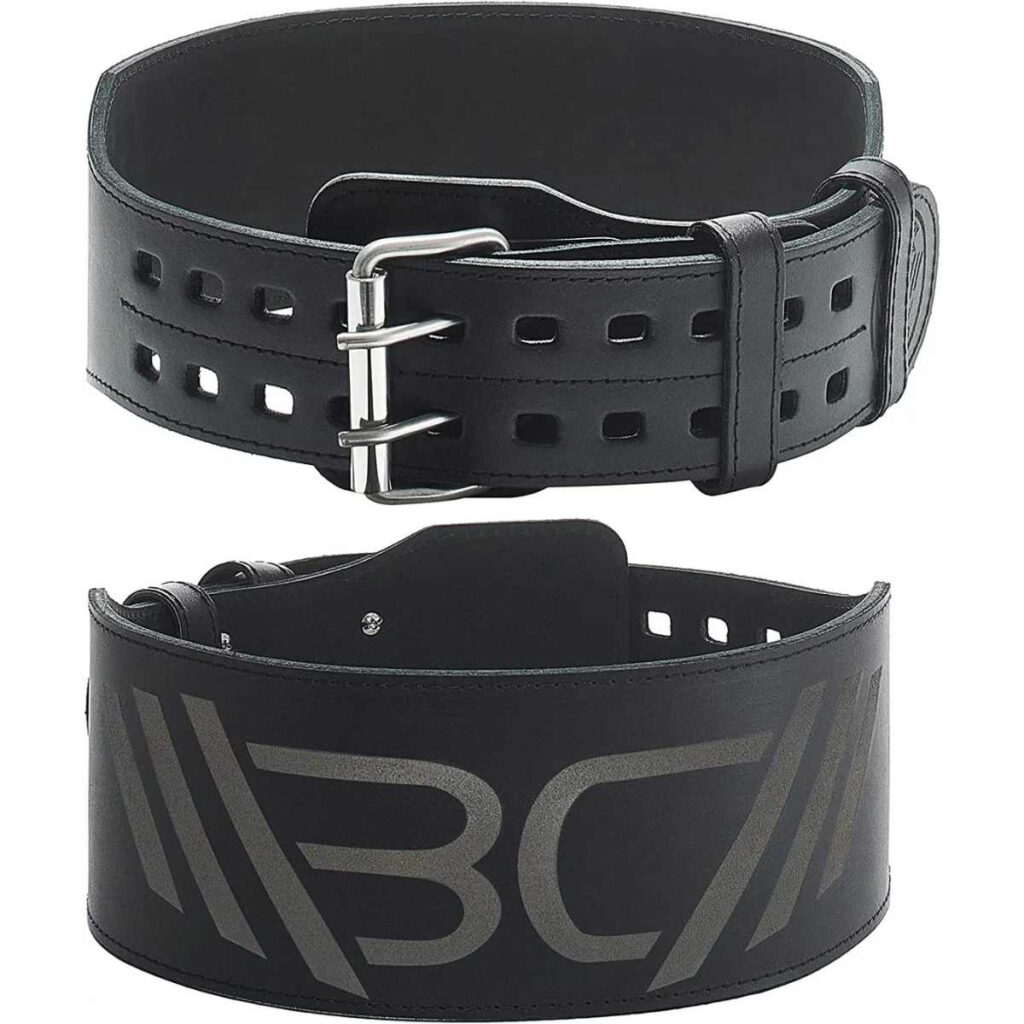
Still have questions after reading our article? Unlock your full potential by engaging with our experts and community! Don’t hesitate — leave a comment below and Ihor Shymechko will provide a personalized answer and insights to help you reach your goals.